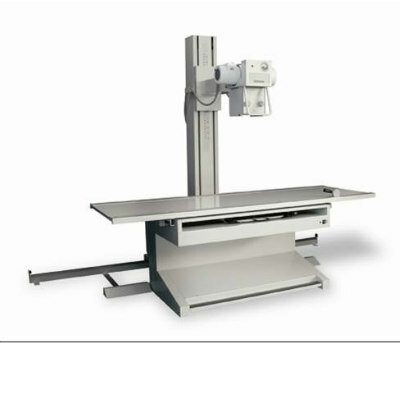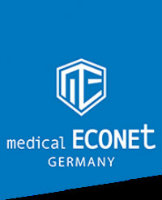Ultrasound Device Improves Peripheral IV Catheter Insertion
|
By MedImaging International staff writers Posted on 25 Jul 2018 |

Image: The Vein Improve peripheral IV catheter placement (Photo courtesy of EchoNous).
A new ultrasound-based vascular access tool aids nurses successfully insert peripheral intravenous (IV) catheters at the first try.
The EchoNous (Seattle, WA, USA) Vein is designed to provide immediate, clear images of superficial and deeper veins one to five centimeters from the skin surface. High-resolution images can be quickly acquired using presets optimized for gain and depth to find and evaluate veins in both pediatric and adult patients. The system is composed of a linear 9.3MHz, 128 element transducer probe, a dedicated tablet unit, a connecting cable, and a rolling stand.
Features include two simple on-screen touch screen controls to enable immediately visualization of veins in the center of the display; text and voice recording; data and ultrasound image outputs; Wi-Fi and Bluetooth connectivity; automatic software updates; and wireless printing. EchoNous Vein also integrates with EchoNous UScan, an artificial intelligence (AI)-driven bladder volume measurement tool which combines machine learning with highly miniaturized ultrasound. Together, they form the EchoNous Platform.
“Time is critical, especially when patients need an infusion or antibiotic treatment, and finding the right vein can be challenging. We designed the EchoNous Vein to provide nurses with rapid, clear images of veins to directly improve patient care, satisfaction and HCAHPS scores,” said Kevin Goodwin, CEO of EchoNous. “We wanted to create an easy-to-use tool that would help to reduce failed sticks, as with each failure comes a much higher risk of vessel trauma or infections which can lead to longer stays in hospital and higher medical costs.”
“EchoNous Vein’s simple on-screen controls allows clinicians using ultrasound to clearly identify veins in the center of the display, helping to not just locate veins, but to evaluate their health and quality prior to peripheral IV placement,” said Nancy Moureau, RN, PhD, CEO of PICC Excellence (Hartwell, GA, USA). “As clinicians we know that IV insertion selecting a healthy vein for catheter placement can help to reduce the chance of post-insertional complications. To have a tool specifically designed to easily select veins and guide catheter placement is extremely valuable, as we’re always looking to improve the patient experience.”
Related Links:
EchoNous
The EchoNous (Seattle, WA, USA) Vein is designed to provide immediate, clear images of superficial and deeper veins one to five centimeters from the skin surface. High-resolution images can be quickly acquired using presets optimized for gain and depth to find and evaluate veins in both pediatric and adult patients. The system is composed of a linear 9.3MHz, 128 element transducer probe, a dedicated tablet unit, a connecting cable, and a rolling stand.
Features include two simple on-screen touch screen controls to enable immediately visualization of veins in the center of the display; text and voice recording; data and ultrasound image outputs; Wi-Fi and Bluetooth connectivity; automatic software updates; and wireless printing. EchoNous Vein also integrates with EchoNous UScan, an artificial intelligence (AI)-driven bladder volume measurement tool which combines machine learning with highly miniaturized ultrasound. Together, they form the EchoNous Platform.
“Time is critical, especially when patients need an infusion or antibiotic treatment, and finding the right vein can be challenging. We designed the EchoNous Vein to provide nurses with rapid, clear images of veins to directly improve patient care, satisfaction and HCAHPS scores,” said Kevin Goodwin, CEO of EchoNous. “We wanted to create an easy-to-use tool that would help to reduce failed sticks, as with each failure comes a much higher risk of vessel trauma or infections which can lead to longer stays in hospital and higher medical costs.”
“EchoNous Vein’s simple on-screen controls allows clinicians using ultrasound to clearly identify veins in the center of the display, helping to not just locate veins, but to evaluate their health and quality prior to peripheral IV placement,” said Nancy Moureau, RN, PhD, CEO of PICC Excellence (Hartwell, GA, USA). “As clinicians we know that IV insertion selecting a healthy vein for catheter placement can help to reduce the chance of post-insertional complications. To have a tool specifically designed to easily select veins and guide catheter placement is extremely valuable, as we’re always looking to improve the patient experience.”
Related Links:
EchoNous
Latest Ultrasound News
- Deep Learning Advances Super-Resolution Ultrasound Imaging
- Novel Ultrasound-Launched Targeted Nanoparticle Eliminates Biofilm and Bacterial Infection
- AI-Guided Ultrasound System Enables Rapid Assessments of DVT
- Focused Ultrasound Technique Gets Quality Assurance Protocol
- AI-Guided Handheld Ultrasound System Helps Capture Diagnostic-Quality Cardiac Images
- Non-Invasive Ultrasound Imaging Device Diagnoses Risk of Chronic Kidney Disease
- Wearable Ultrasound Platform Paves Way for 24/7 Blood Pressure Monitoring On the Wrist
- Diagnostic Ultrasound Enhancing Agent to Improve Image Quality in Pediatric Heart Patients
- AI Detects COVID-19 in Lung Ultrasound Images
- New Ultrasound Technology to Revolutionize Respiratory Disease Diagnoses
- Dynamic Contrast-Enhanced Ultrasound Highly Useful For Interventions
- Ultrasensitive Broadband Transparent Ultrasound Transducer Enhances Medical Diagnosis
- Artificial Intelligence Detects Heart Defects in Newborns from Ultrasound Images
- Ultrasound Imaging Technology Allows Doctors to Watch Spinal Cord Activity during Surgery

- Shape-Shifting Ultrasound Stickers Detect Post-Surgical Complications
- Non-Invasive Ultrasound Technique Helps Identify Life-Changing Complications after Neck Surgery
Channels
Radiography
view channel
Novel Breast Imaging System Proves As Effective As Mammography
Breast cancer remains the most frequently diagnosed cancer among women. It is projected that one in eight women will be diagnosed with breast cancer during her lifetime, and one in 42 women who turn 50... Read more
AI Assistance Improves Breast-Cancer Screening by Reducing False Positives
Radiologists typically detect one case of cancer for every 200 mammograms reviewed. However, these evaluations often result in false positives, leading to unnecessary patient recalls for additional testing,... Read moreMRI
view channel
PET/MRI Improves Diagnostic Accuracy for Prostate Cancer Patients
The Prostate Imaging Reporting and Data System (PI-RADS) is a five-point scale to assess potential prostate cancer in MR images. PI-RADS category 3 which offers an unclear suggestion of clinically significant... Read more
Next Generation MR-Guided Focused Ultrasound Ushers In Future of Incisionless Neurosurgery
Essential tremor, often called familial, idiopathic, or benign tremor, leads to uncontrollable shaking that significantly affects a person’s life. When traditional medications do not alleviate symptoms,... Read more
Two-Part MRI Scan Detects Prostate Cancer More Quickly without Compromising Diagnostic Quality
Prostate cancer ranks as the most prevalent cancer among men. Over the last decade, the introduction of MRI scans has significantly transformed the diagnosis process, marking the most substantial advancement... Read moreNuclear Medicine
view channel
New SPECT/CT Technique Could Change Imaging Practices and Increase Patient Access
The development of lead-212 (212Pb)-PSMA–based targeted alpha therapy (TAT) is garnering significant interest in treating patients with metastatic castration-resistant prostate cancer. The imaging of 212Pb,... Read moreNew Radiotheranostic System Detects and Treats Ovarian Cancer Noninvasively
Ovarian cancer is the most lethal gynecological cancer, with less than a 30% five-year survival rate for those diagnosed in late stages. Despite surgery and platinum-based chemotherapy being the standard... Read more
AI System Automatically and Reliably Detects Cardiac Amyloidosis Using Scintigraphy Imaging
Cardiac amyloidosis, a condition characterized by the buildup of abnormal protein deposits (amyloids) in the heart muscle, severely affects heart function and can lead to heart failure or death without... Read moreGeneral/Advanced Imaging
view channel
New AI Method Captures Uncertainty in Medical Images
In the field of biomedicine, segmentation is the process of annotating pixels from an important structure in medical images, such as organs or cells. Artificial Intelligence (AI) models are utilized to... Read more.jpg)
CT Coronary Angiography Reduces Need for Invasive Tests to Diagnose Coronary Artery Disease
Coronary artery disease (CAD), one of the leading causes of death worldwide, involves the narrowing of coronary arteries due to atherosclerosis, resulting in insufficient blood flow to the heart muscle.... Read more
Novel Blood Test Could Reduce Need for PET Imaging of Patients with Alzheimer’s
Alzheimer's disease (AD), a condition marked by cognitive decline and the presence of beta-amyloid (Aβ) plaques and neurofibrillary tangles in the brain, poses diagnostic challenges. Amyloid positron emission... Read more.jpg)
CT-Based Deep Learning Algorithm Accurately Differentiates Benign From Malignant Vertebral Fractures
The rise in the aging population is expected to result in a corresponding increase in the prevalence of vertebral fractures which can cause back pain or neurologic compromise, leading to impaired function... Read moreImaging IT
view channel
New Google Cloud Medical Imaging Suite Makes Imaging Healthcare Data More Accessible
Medical imaging is a critical tool used to diagnose patients, and there are billions of medical images scanned globally each year. Imaging data accounts for about 90% of all healthcare data1 and, until... Read more
Global AI in Medical Diagnostics Market to Be Driven by Demand for Image Recognition in Radiology
The global artificial intelligence (AI) in medical diagnostics market is expanding with early disease detection being one of its key applications and image recognition becoming a compelling consumer proposition... Read moreIndustry News
view channel
Bayer and Google Partner on New AI Product for Radiologists
Medical imaging data comprises around 90% of all healthcare data, and it is a highly complex and rich clinical data modality and serves as a vital tool for diagnosing patients. Each year, billions of medical... Read more



















